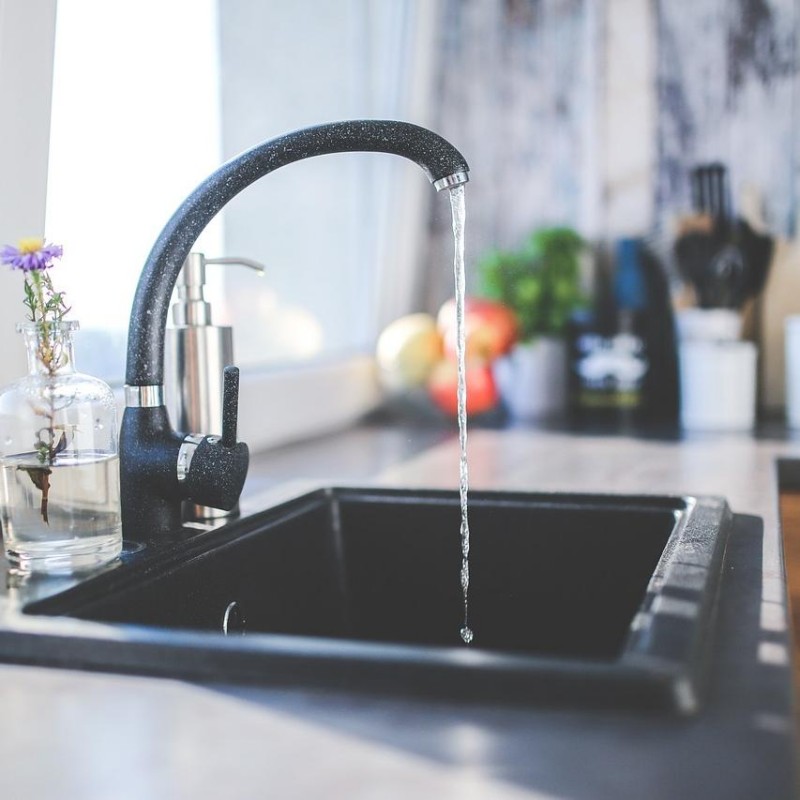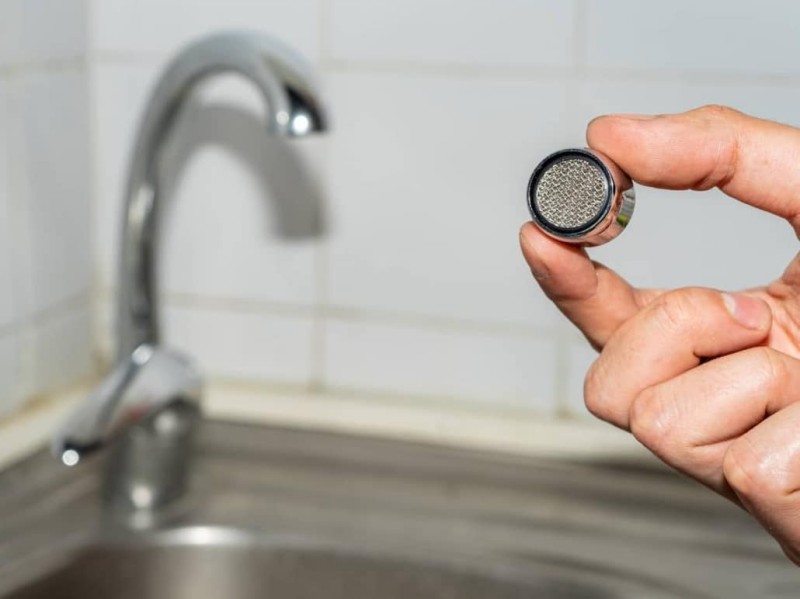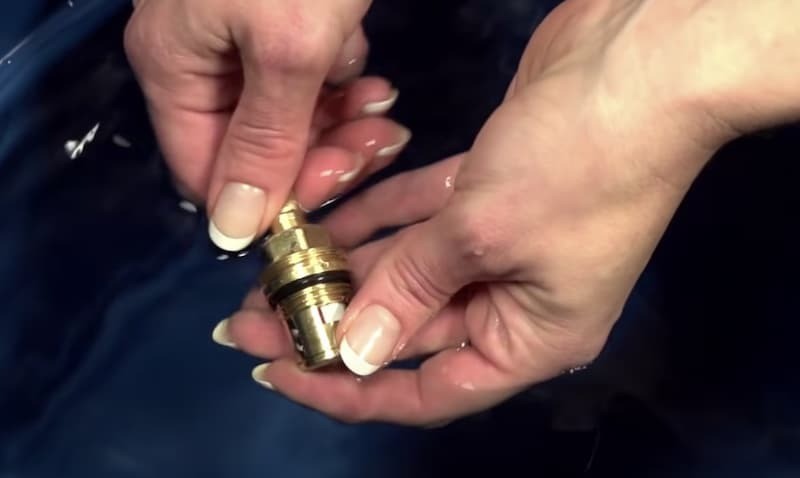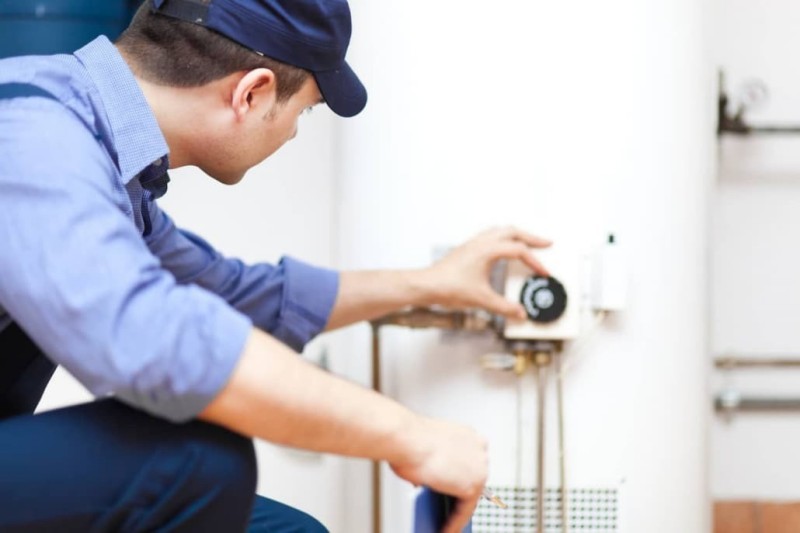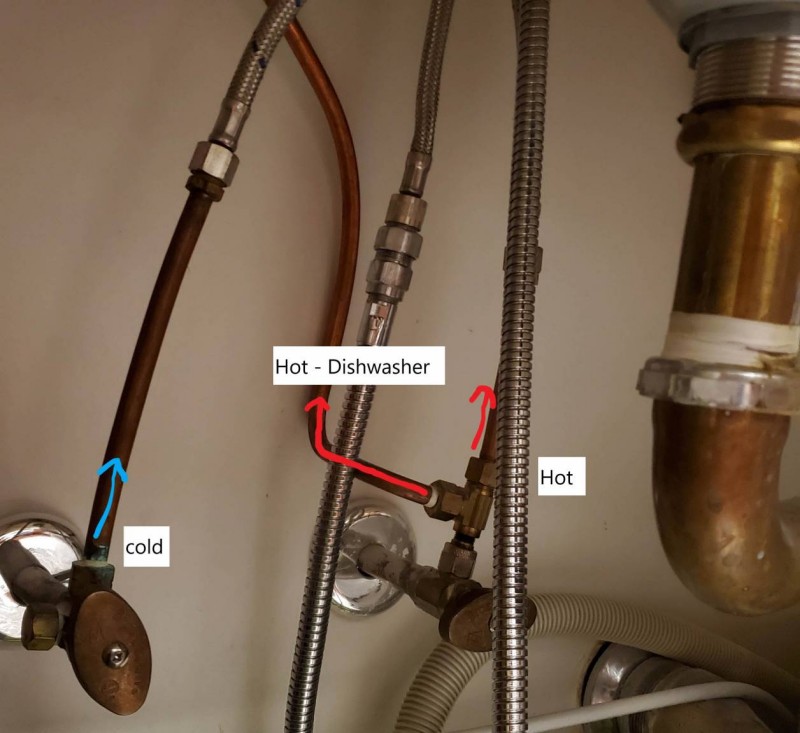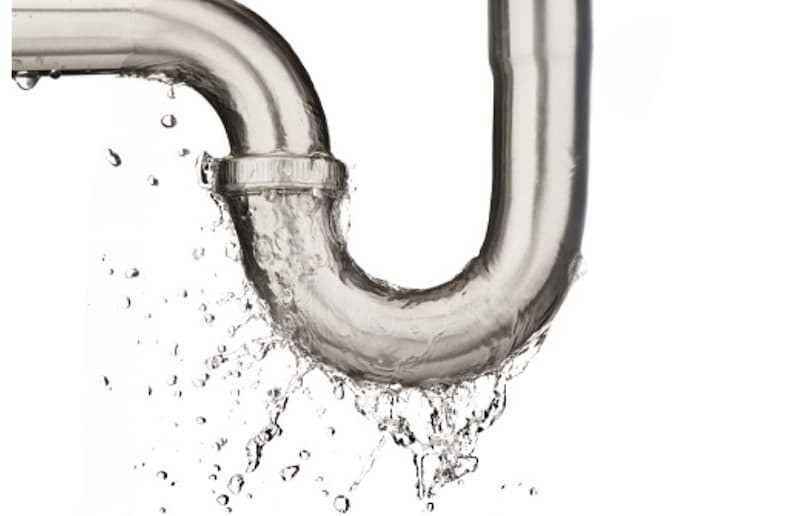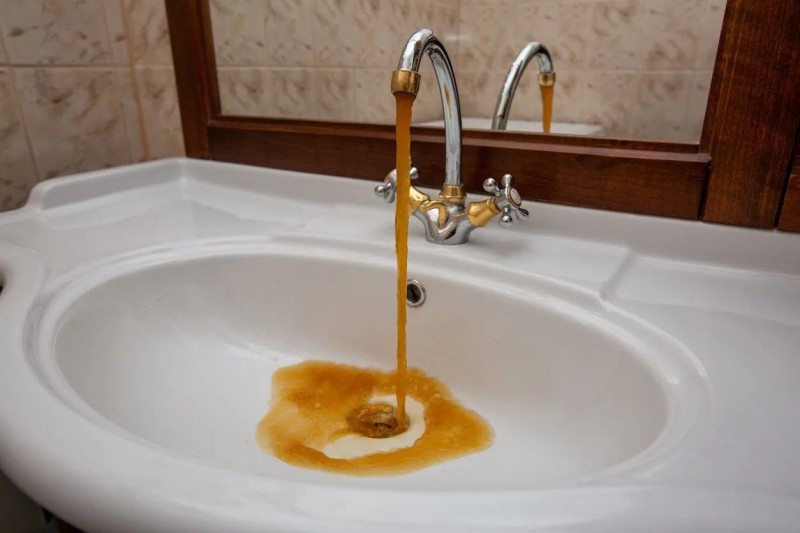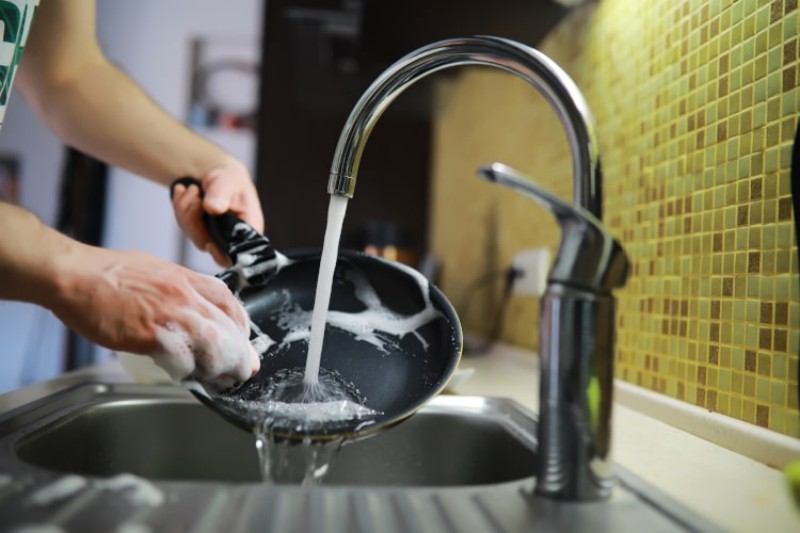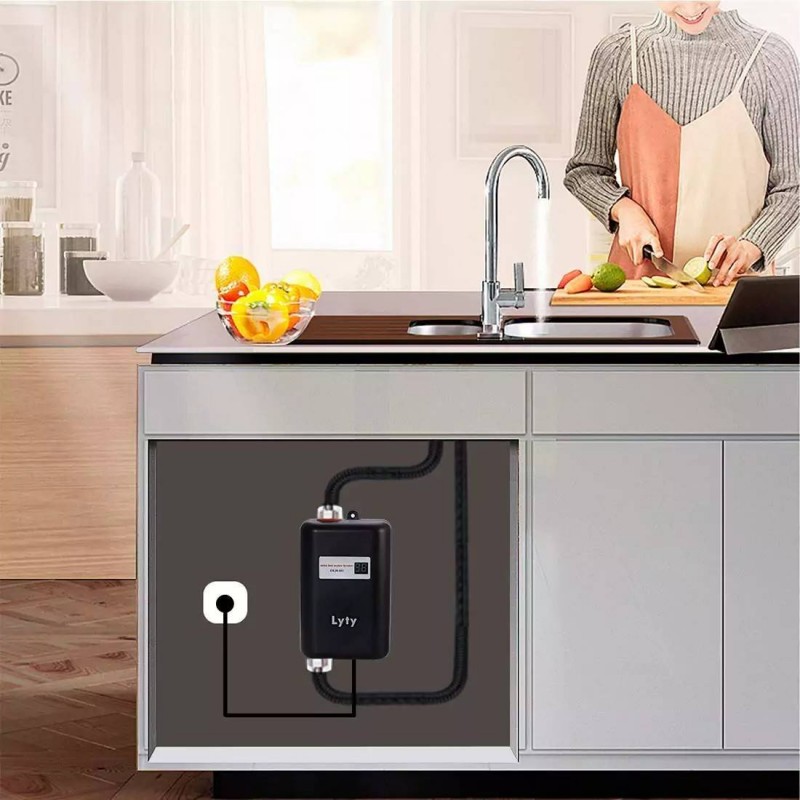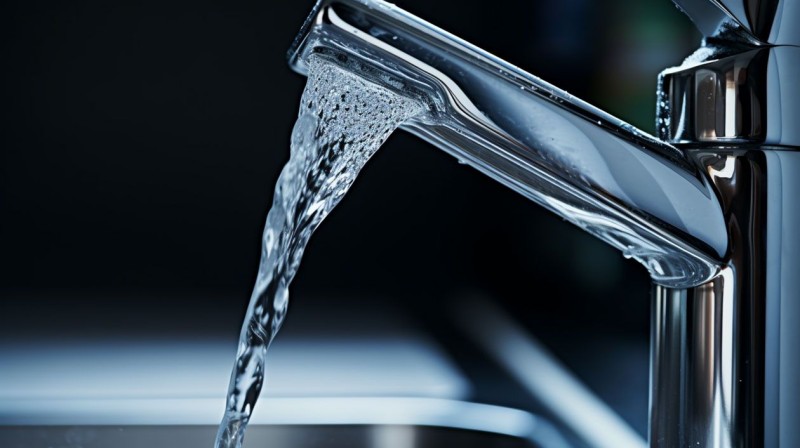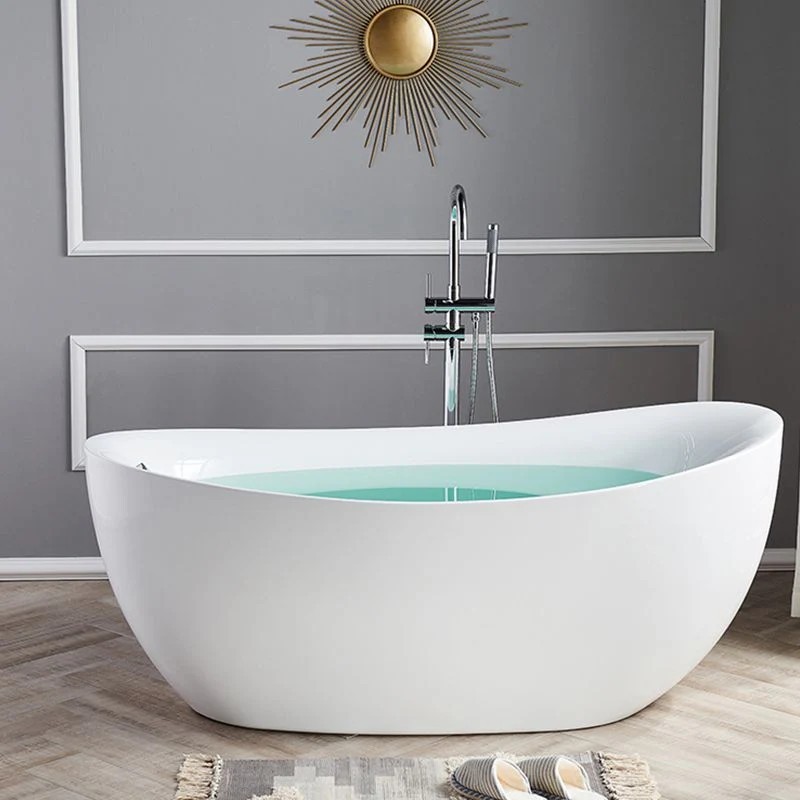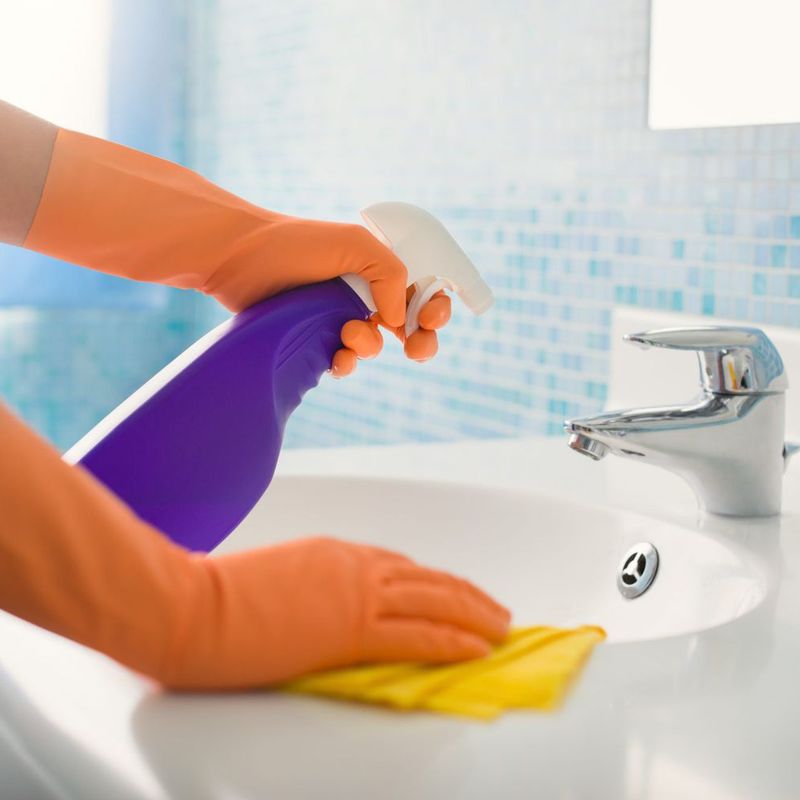 English
English
Jabra Sanitary is a sanitaryware supplier offering toilets, sinks, faucets, bathtubs, etc., at competitive prices. If you're a distributor, wholesaler, or project contractor, get a quote today!
 $23.9 Limited-time Offer
$23.9 Limited-time Offer Consignment Policy
Consignment Policy 20 Years of Experience
20 Years of Experience
Water pressure plays a vital role in kitchen functionality. Whether you're washing dishes or filling a pot, low water pressure can be a frustrating issue. When the water pressure drops in your kitchen sink, it disrupts daily activities and makes simple tasks take longer.
Fortunately, there are several ways to diagnose and fix the problem. This guide will help you understand why is the water pressure low in the kitchen sink and provide practical steps to increase water pressure in sink effectively.
Table of Contents
First Thing to Confirm: Is This Just Your Kitchen Faucet?
What Causes Low Water Pressure in Kitchen Sink
Practical Steps: How to Increase Water Pressure in Kitchen Sink
FAQs
Conclusion: Don't Let Low Pressure Dampen Your Day
First Thing to Confirm: Is This Just Your Kitchen Faucet?
Before diving into potential fixes, it's essential to determine whether the low water pressure issue is isolated to the kitchen faucet or affects the entire plumbing system. Follow these steps to confirm the source:
a. Go Through Your House Turning Each Faucet On
Turn on faucets in different areas of your home. If the issue is present in all faucets, it may be a broader plumbing or water supply issue. If the problem is only with the kitchen, you may need to increase water pressure kitchen faucet directly.
b. Check with Neighbors
If other faucets are fine, but neighbors are experiencing similar issues, it could be a municipal water supply problem rather than an internal plumbing issue. This might explain why is the water pressure low in my kitchen sink specifically.
c. Hot Water Issues Only
If the problem is only with hot water, suspect a water heater issue or a problem with the hot water line. It's advisable to seek professional assistance for water heater repairs, which could help increase water pressure in kitchen sink for hot water.
d. Check for Leaky Sinks
Inspect the kitchen sink and surrounding areas for leaks. Leaky connections can reduce water pressure and require prompt repairs to prevent further damage. Fixing leaks can also help increase sink water pressure.
What Causes Low Water Pressure in Kitchen Sink
Identifying the cause of low water pressure is the first step toward a successful fix. Here are the most common reasons why is the water pressure low in your kitchen sink:
1. Blocked Aerator
A clogged aerator can significantly reduce water pressure. Sediment or debris buildup can restrict the water flow, affecting the faucet's performance. Cleaning the aerator can help increase kitchen sink water pressure.
2. Clogged Cartridge
The faucet cartridge regulates water flow. If it becomes clogged with sediment, water pressure can drop. Replacing or cleaning the cartridge can restore normal flow and help increase water pressure kitchen sink effectively.
3. Blockage in the Supply Line
Mineral deposits or debris can accumulate inside the water supply line, leading to restricted flow and reduced pressure. Regular maintenance can help prevent such blockages, ensuring better water pressure kitchen sink.
4. Malfunctioning Relief Valve (PRV)
The Pressure Relief Valve (PRV) controls the water pressure in your plumbing system. If it malfunctions, it can lower water pressure throughout the house, including the kitchen. Adjusting or replacing the PRV can help increase sink water pressure effectively.
5. Plumbing Leaks
Leaks in your plumbing system can cause a significant drop in water pressure. Check for wet spots around pipes and connections. Fixing leaks promptly can increase water pressure in kitchen sink.
6. Corrosion in the Water Lines
Over time, metal pipes can corrode, restricting water flow. Corrosion can be a major cause of low water pressure, especially in older homes. Replacing corroded pipes can improve water pressure kitchen sink significantly.
7. Sediment Buildup in Water Lines
Mineral and sediment buildup inside pipes can reduce water flow. Flushing the lines or using water softeners can help maintain optimal water pressure in kitchen sink.
8. Municipal Water Supply Issues
If your entire neighborhood is experiencing low water pressure, it might be a municipal water supply problem. Contact your water provider to confirm and address the issue, as it affects overall water pressure in the kitchen sink.
9. Malfunctioning Water Heater
If you have low hot water pressure, the problem could be with your water heater. Sediment buildup or mechanical issues can affect water pressure. Regular maintenance of the heater can help increase kitchen sink water pressure.
10. Hot Water Pressure is Low
If only the hot water pressure is low, it may be due to clogged hot water pipes or issues with the heater. Addressing these issues can help increase water pressure in sink specifically for hot water.
11. Faucet Problems
A malfunctioning or outdated faucet can restrict water flow. Replacing an old faucet with a new model can improve water pressure in the kitchen sink.
Practical Steps to Increase Water Pressure in Kitchen Sink
Once you've identified the potential cause of low water pressure, you can take specific steps to resolve the issue.
Here's how to increase water pressure in a kitchen sink effectively:
a. Clean the Aerator
The aerator is the small screen at the end of your faucet spout. To clean it, unscrew the aerator from the faucet using a pair of pliers, soak it in vinegar to dissolve any debris or mineral buildup, and then scrub it with a toothbrush.
Reattach the aerator and test the water flow. This simple fix can increase water pressure in sink rapidly.
b. Replace a Faulty Cartridge
If cleaning the aerator doesn't resolve the issue, the cartridge inside the faucet may be clogged or faulty. Shut off the water supply, remove the faucet handle, and access the cartridge.
Replace it with a new one that matches your faucet model. This step can often restore proper water flow and increase water pressure kitchen sink.
c. Adjusting the Pressure Relief Valve (PRV)
The PRV regulates water pressure entering your home. If the PRV is malfunctioning or improperly set, it can reduce water pressure.
Locate the valve, usually near the main water line, and try adjusting it to see if pressure improves. Adjusting the PRV can help increase kitchen sink water pressure significantly.
d. Check for Faucet Functionality
In some cases, the faucet itself may be faulty or old, causing low water pressure.
Consider replacing the faucet if it's outdated or consistently fails to maintain normal pressure, even after cleaning and cartridge replacement. Newer models can help increase water pressure kitchen faucet easily.
e. Address Piping Problems
If none of the above steps work, there might be a blockage in the pipes leading to the kitchen sink. Flushing the pipes can help, but more serious blockages may require professional assistance to increase water pressure kitchen sink.
f. Handling Mainline Blockages
Sometimes, blockages in the main water line can cause low water pressure throughout the house, including the kitchen sink.
If you suspect a mainline issue, it's best to contact a plumber, as mainline repairs are complex and may require specialized tools to fix poor water pressure in kitchen sink.
g. Maintaining Water Heater Health
If you're experiencing low hot water pressure, check your water heater for sediment buildup, which can impede flow. Flushing the heater or calling a professional for maintenance can help increase sink water pressure for hot water usage.
FAQs
Is low water pressure an emergency?
Low water pressure isn't always an emergency, but it should be addressed promptly to prevent bigger plumbing issues. Identifying what causes low water pressure in kitchen sink is key.
What is considered low pressure in plumbing?
Water pressure below 40 psi is generally considered low. Ideal pressure ranges between 45-60 psi, which ensures increased water pressure in kitchen sink.
Can air in pipes affect water pressure?
Yes, air in pipes can cause uneven water pressure and sputtering flow. Bleeding the pipes can help resolve this issue and increase water pressure in sink.
Can a faulty tap cause low water pressure?
Yes, a malfunctioning tap can restrict water flow. Replacing the tap can restore normal pressure, helping increase sink water pressure.
Can a plumber fix low water pressure? When to call a professional plumber?
Yes, a professional plumber can diagnose and fix most causes of low water pressure, including leaks, blockages, and faulty equipment. Consult one if you can't increase water pressure kitchen sink yourself.
While some fixes are simple, others require a professional's expertise. Consider calling a plumber if:
- The problem persists despite attempts to increase water pressure.
- There are visible leaks or signs of corrosion in the plumbing.
- You're unable to identify the source of low pressure.
- Mainline or extensive piping repairs are needed.
Conclusion: Don't Let Low Pressure Dampen Your Day
Low water pressure in the kitchen sink can be inconvenient, but it's often fixable with simple steps like cleaning the aerator, replacing the cartridge, or adjusting the PRV.
Addressing the issue quickly can prevent further complications and keep your kitchen running smoothly. Regular maintenance (Learn how to clean a kitchen sink) and timely repairs are key to maintaining optimal water pressure.
By understanding what causes low water pressure in kitchen sink, you can take steps to increase water pressure kitchen faucet and avoid similar issues in the future.







